California Science Center 01-19-2010
It was a rainy day so what better thing to do than go to a museum!!!
Did you know? - The California Science Center (sometimes spelled California ScienCenter) is a state agency and museum located in Exposition Park, Los Angeles. Billed as the West Coast's largest hands-on science center, the California ScienCenter is a public-private partnership between the State and the California Science Center Foundation.
Formerly known as the California Museum of Science and Industry, the Museum was remodeled in 1998 as the California Science Center. Currently it consists of the IMAX Theater, the Sketch Foundation Gallery - Air and Space Exhibits (formerly Aerospace Hall) and the Science Center itself. The California Science Center hosts the California State Science Fair annually.
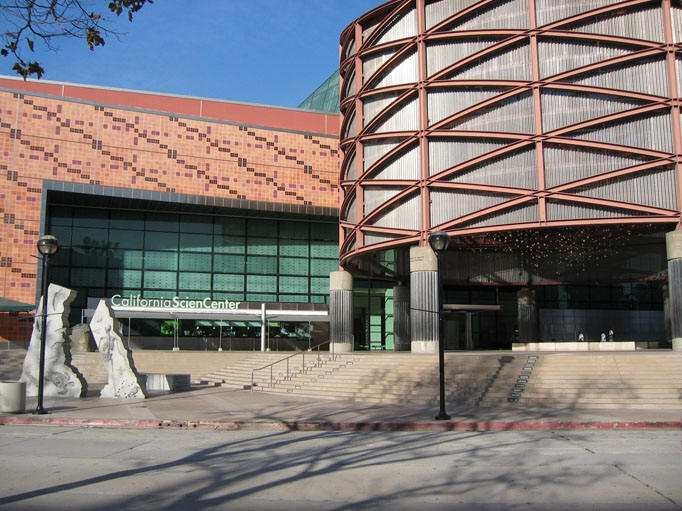
What it looks like on a clear day!
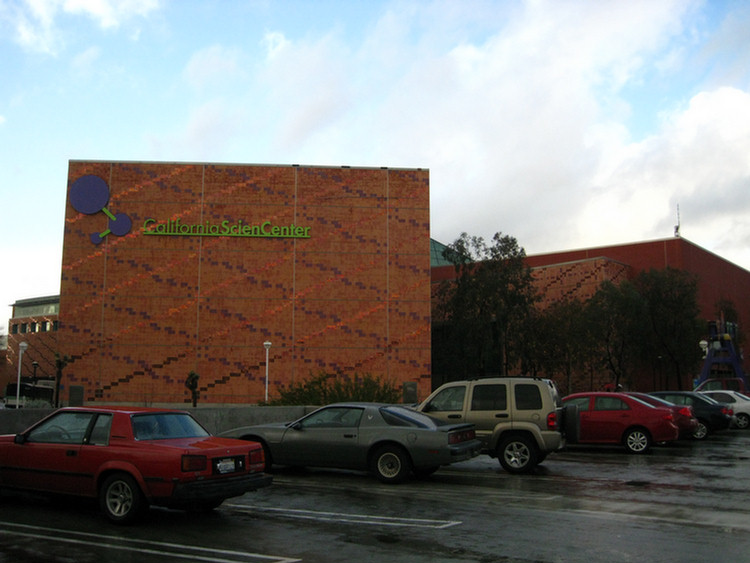
It's a short walk from the parking structure

Wide open spaces, the displays are on the 2nd and 3rd floors
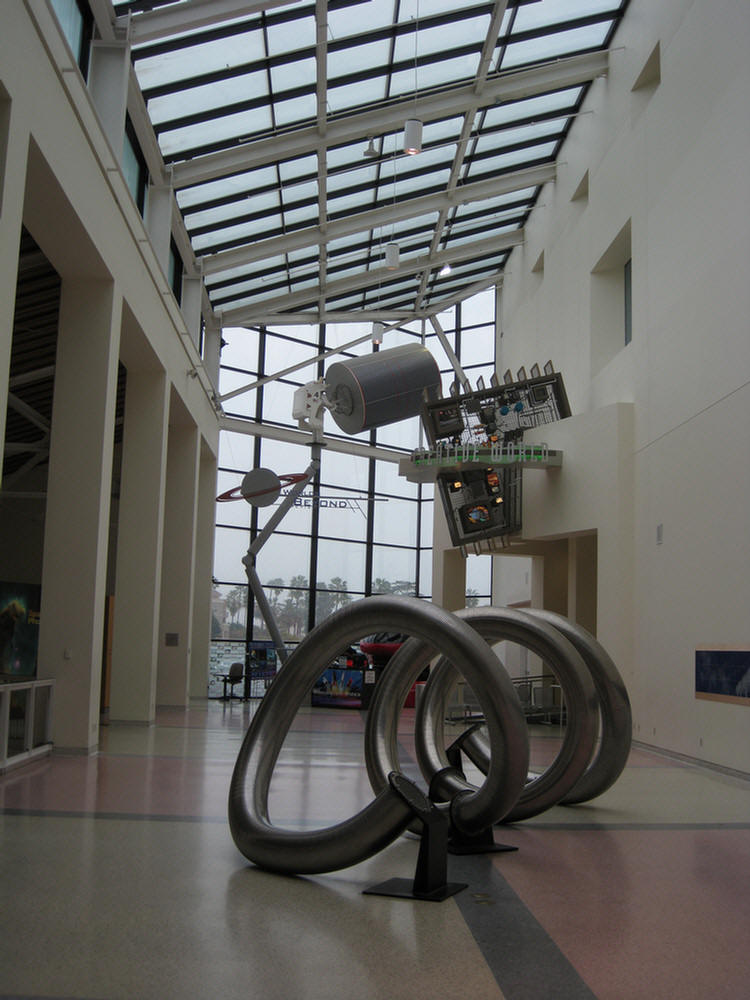
This hallway leads to the Communications displays
Did you know? - The park is public-space owned by the state of California, whose major cultural facilities mentioned above are operated by both the state and Los Angeles County. Originally, the 160-acre (0.65 km2) site served as an agricultural fairground from 1872 to 1910. (hence its original name Agricultural Park) Farmers sold their harvests on the grounds, while horses, dogs, and even camels competed along a racetrack where the rose garden now blooms today.
In 1880, John Edward, along with Mr. Ozro Childs, and former Governor Downey persuaded the State of California to purchase 160 acres in Los Angeles to foster agriculture in the Southland. Soon after USC was built in 1880, the city's most influential families moved into the neighborhood, but did not appreciate the racing and the gambling that came with it. As a result, the rose-garden replaced the racetrack, and the park became what it is now with its grand museums.
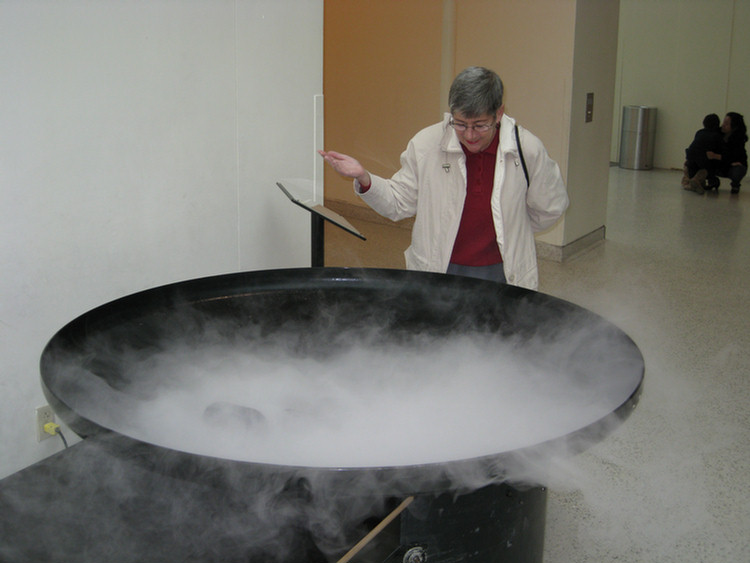
Sue had to play in the fog machine
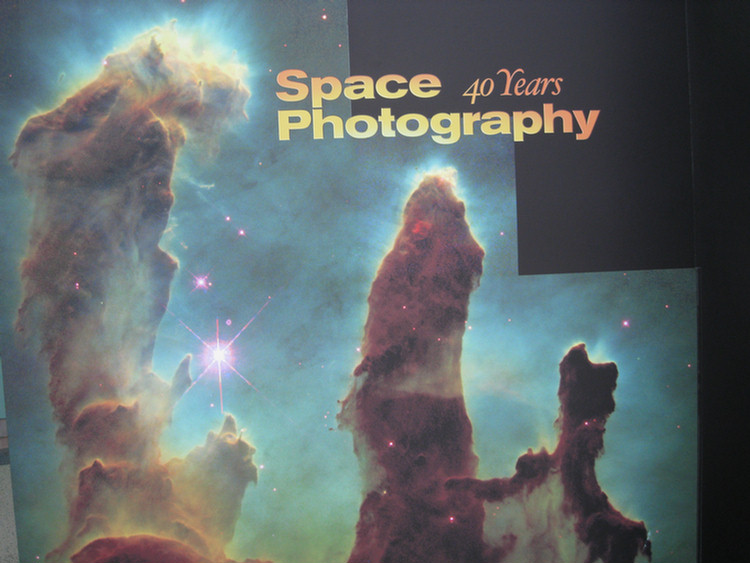
They had great pictures taken from space
Did you know? - The Hubble Space Telescope (HST) is a space telescope that was carried into orbit by the space shuttle in April 1990. It is named after the American astronomer Edwin Hubble. Although not the first space telescope, Hubble is one of the largest and most versatile, and is well-known as both a vital research tool and a public relations boon for astronomy. The HST is a collaboration between NASA and the European Space Agency, and is one of NASA's Great Observatories, along with the Compton Gamma Ray Observatory, the Chandra X-ray Observatory, and the Spitzer Space Telescope.
The latest servicing should allow the telescope to function until at least 2014, when its successor, the James Webb Space Telescope (JWST), is due to be launched. The JWST will be far superior to Hubble for many astronomical research programs, but will only observe in infrared, so it will complement (not replace) Hubble's ability to observe in the visible and ultraviolet parts of the spectrum.

An amazing exhibit
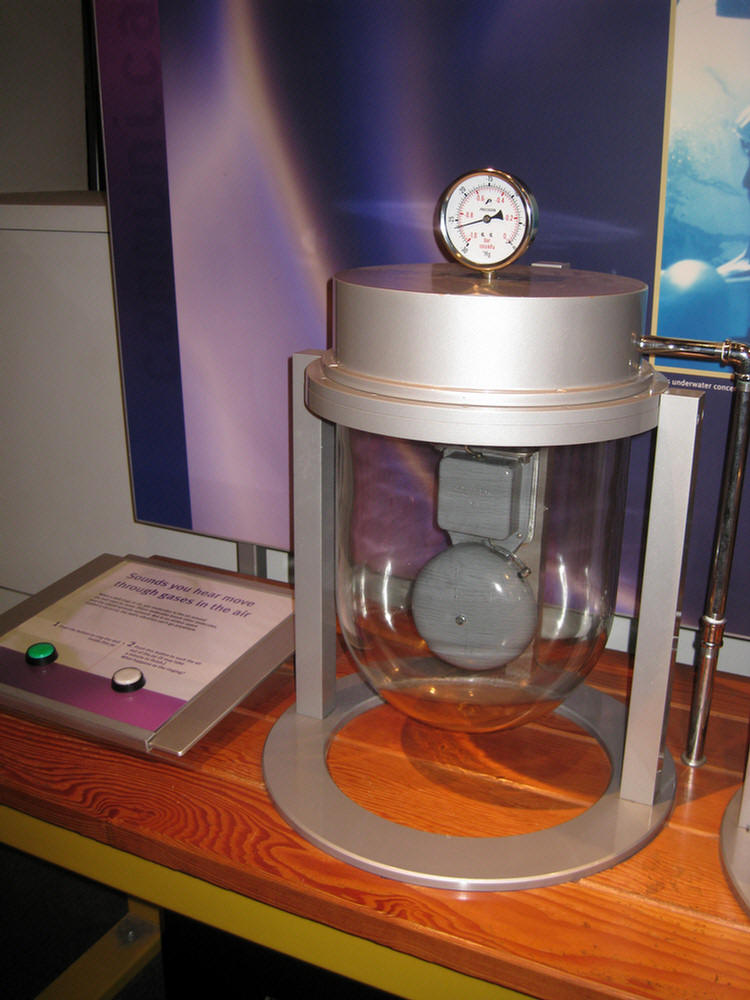
Ringing a bell with air and without air (in a vacuum)
Did you know? - Sound is a travelling wave which is an oscillation of pressure transmitted through a solid, liquid, or gas, composed of frequencies within the range of hearing and of a level sufficiently strong to be heard, or the sensation stimulated in organs of hearing by such vibrations.
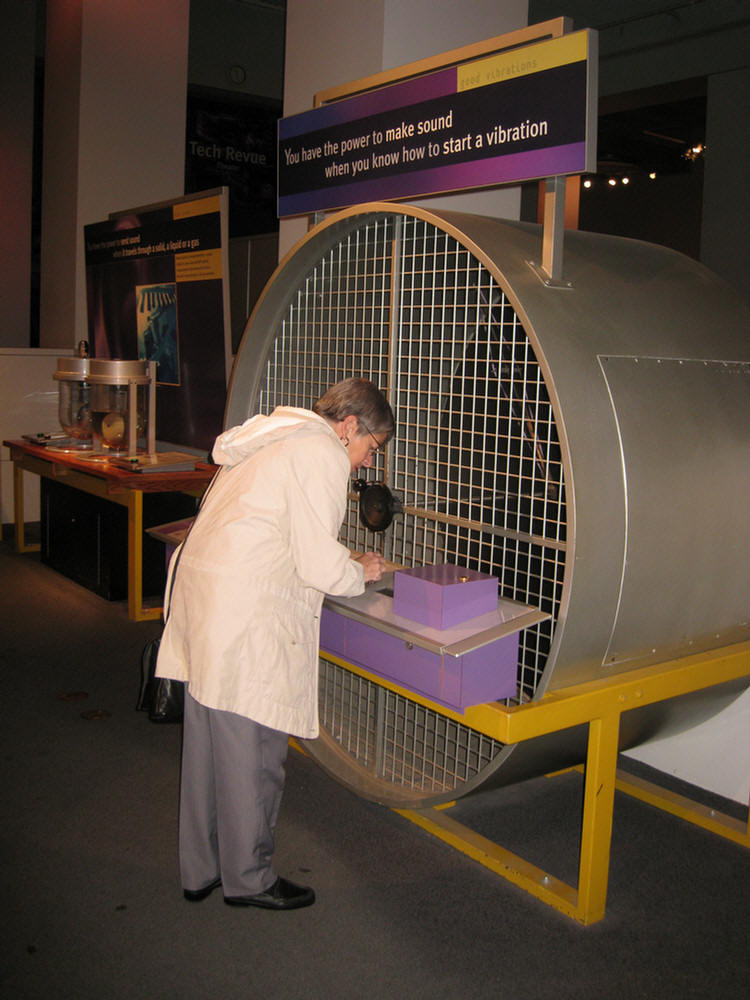
Turn the wheel and sound is generated
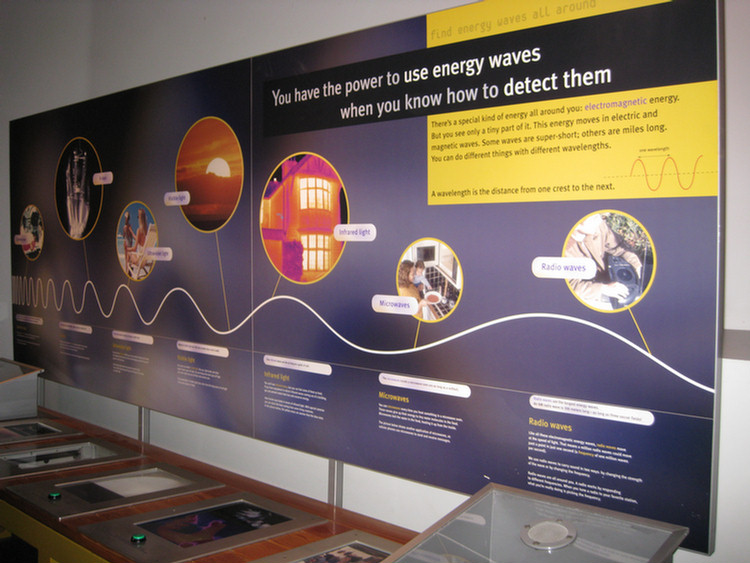
Wavelengths are explained
We Headed For The Structures Exhibits
Did you know? - Structural engineering is a field of engineering dealing with the analysis and design of structures that support or resist loads. Structural engineering is usually considered a specialty within civil engineering, but it can also be studied in its own right. Structural engineers are most commonly involved in the design of buildings and large nonbuilding structures but they can also be involved in the design of machinery, medical equipment, vehicles or any item where structural integrity affects the item's function or safety. Structural engineers must ensure their designs satisfy given design criteria, predicated on safety (e.g. structures must not collapse without due warning) or serviceability and performance (e.g. building sway must not cause discomfort to the occupants).
Structural engineering theory is based upon physical laws and empirical knowledge of the structural performance of different landscapes and materials. Structural engineering design utilizes a relatively small number of basic structural elements to build up structural systems that can be very complex. Structural engineers are responsible for making creative and efficient use of funds, structural elements and materials to achieve these goals.
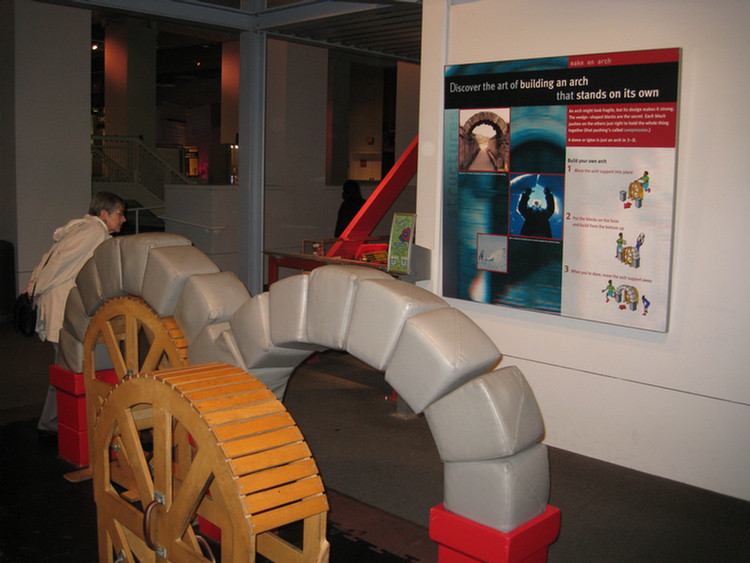
Kids create an arch with the use of the wooden tool and then remove the structure remains
Did you know? - An arch is a structure that spans a space while supporting weight (e.g. a doorway in a stone wall). Arches appeared as early as the 2nd millennium BC in Mesopotamian brick architecture and their systematic use started with the Ancient Romans who were the first to apply the technique to a wide range of structures.
Arches were known by a number of civilizations in the Ancient Near East and the Levant such as the Urartians, Harappan, Egyptian, Babylonian, Assyrian and Greek civilizations, but their use was infrequent and mostly confined to underground structures such as drains where the problem of lateral thrust is greatly diminished
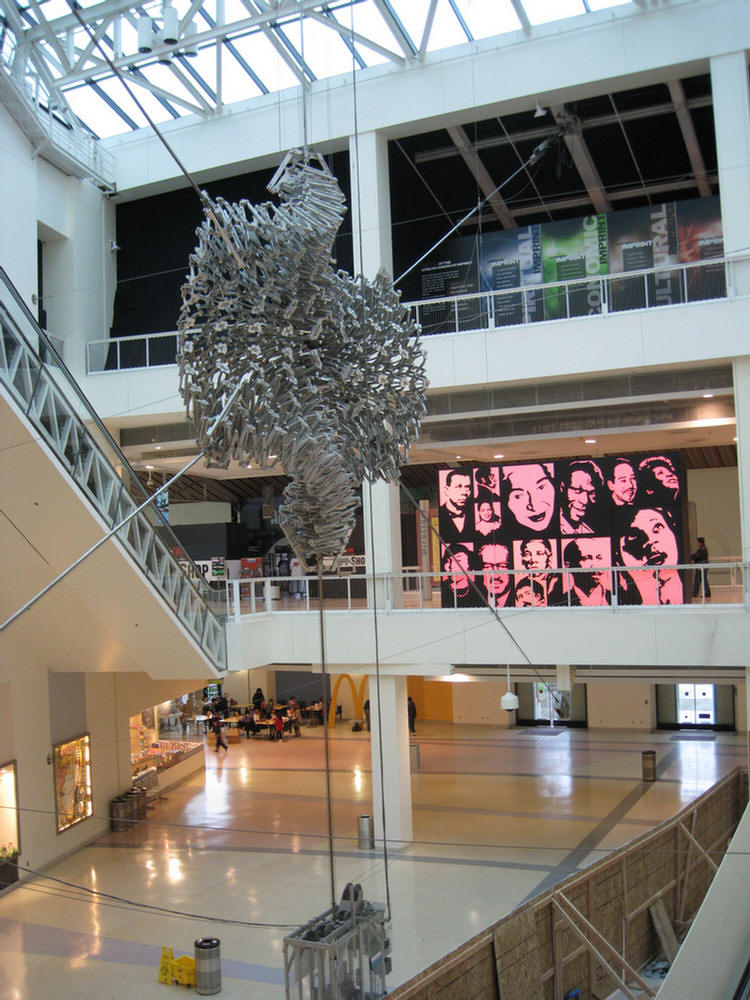
Mechanical marvels in the main entrance way

The Pipes Of Pan
Did you know? - The pan flute or pan pipe (also known as pan flute or panpipes) is an ancient musical instrument based on the principle of the Closed tube, consisting usually of five or more pipes of gradually increasing length (and, at times, girth). The pan flute has long been popular as a folk instrument, and is considered the first mouth organ, ancestor of both the pipe organ and the harmonica. The pan flute is named for its association with the rustic Greek god Pan. The pipes of the pan flute are typically made from bamboo or giant cane; other materials used include wood, plastic, and metal.

We Enter The World Of Life Exhibits... Quite Good!
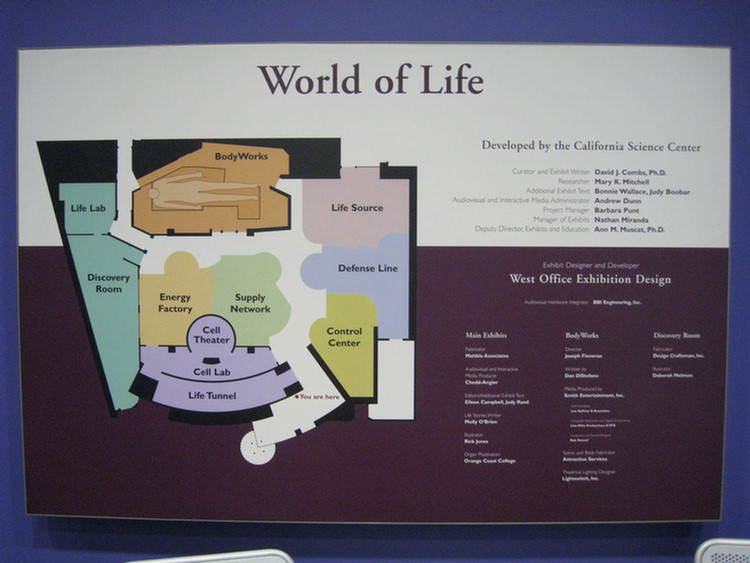
This single display could take two hours easily!

Life (living things) must get energy, process it, remove waste
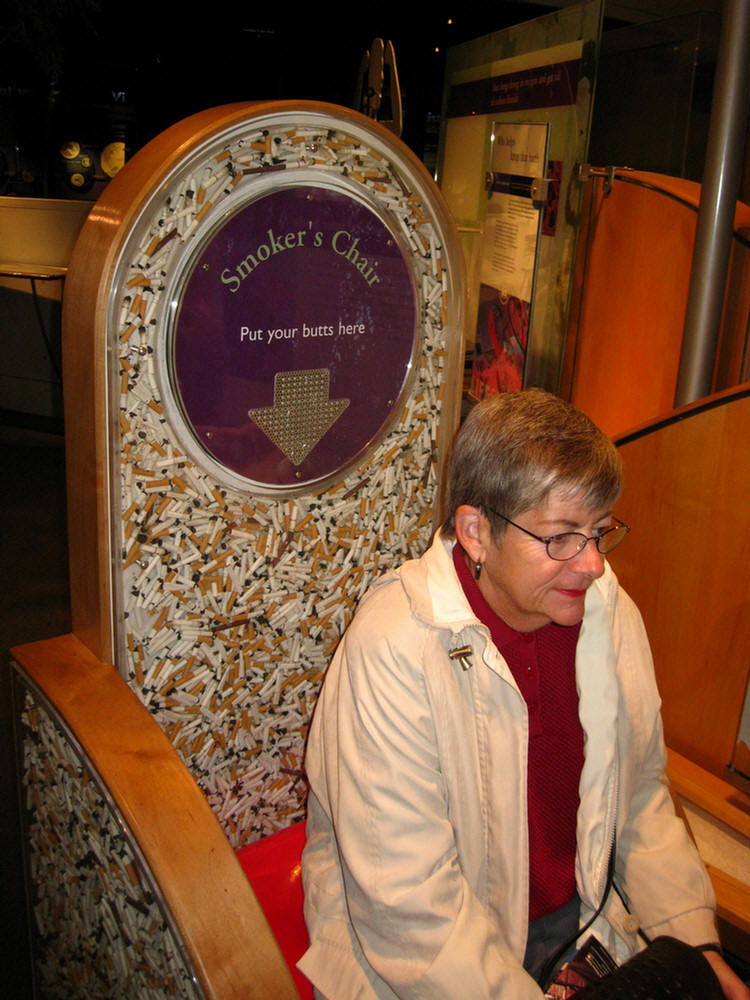
We could not resist!
Did you know? - The term cigarette, as commonly used, refers to a tobacco cigarette but can apply to similar devices containing other herbs, such as cannabis. A cigarette is distinguished from a cigar by its smaller size, use of processed leaf, and paper wrapping, which is normally white, though other colors are available. Cigars are typically composed entirely of whole-leaf tobacco.
Rates of cigarette smoking vary widely. While rates of smoking have leveled off or declined in the developed world, they continue to rise in developing nations. Nicotine, the primary psychoactive chemical in cigarettes, has been shown to be addictive.
Statistically each cigarette smoked shortens the users lifespan by 11 minutes, and smokers who die of tobacco-related disease lose 14 years of life, on average. Cigarette use by pregnant women has also been shown to cause birth defects, including mental and physical disabilities. Cigarettes are the most frequent source of fires in private homes, which has prompted the European Union to attempt to ban cigarettes that are not fire-safe by 2011.
Secondhand smoke from cigarettes has been shown to be injurious to bystanders, which has led to legislation that has banned their smoking in many workplaces and public areas.
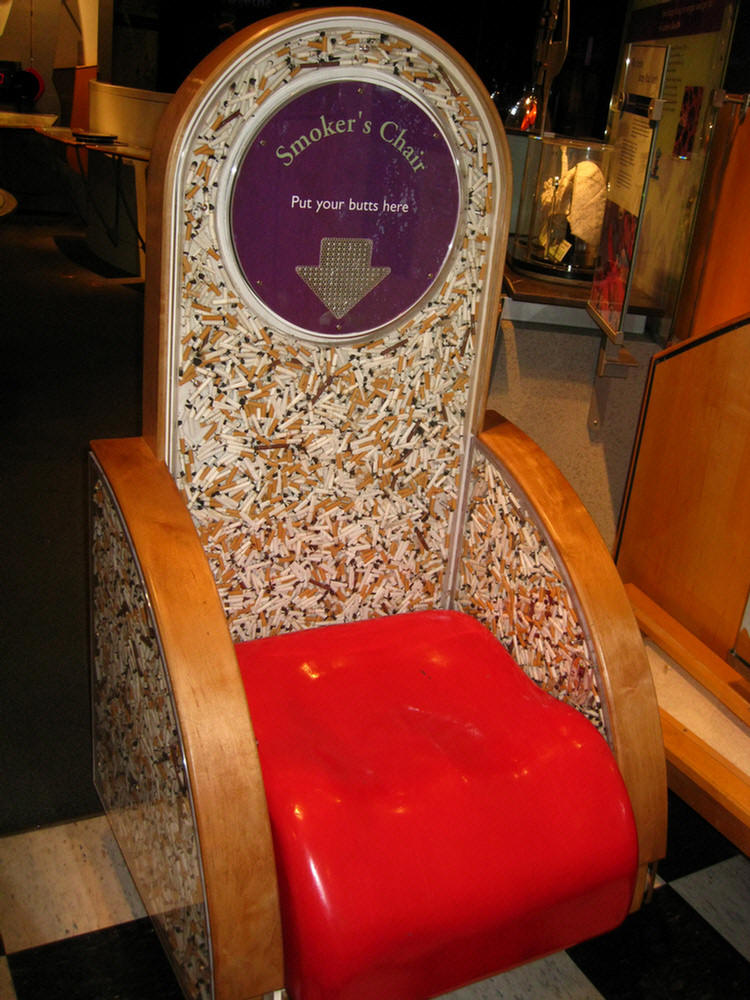

Human lungs
Did you know? - The lung or pulmonary system is the essential respiration organ in all air-breathing animals, including most tetrapods, a few fish and a few snails. In mammals and the more complex life forms, the two lungs are located in the chest on either side of the heart. Their principal function is to transport oxygen from the atmosphere into the bloodstream, and to release carbon dioxide from the bloodstream into the atmosphere. This exchange of gases is accomplished in the mosaic of specialized cells that form millions of tiny, exceptionally thin-walled air sacs called alveoli.
In addition to their function in respiration, the lungs also:
- alter the pH of blood by facilitating alterations in the partial pressure of carbon dioxide
- filter out small blood clots formed in veins
- filter out gas micro-bubbles occurring in the venous blood stream such as those created after scuba diving during decompression .
- influence the concentration of some biologic substances and drugs used in medicine in blood
- convert angiotensin I to angiotensin II by the action of angiotensin-converting enzyme
- may serve as a layer of soft, shock -absorbent protection for the heart , which the lungs flank and nearly enclose.
- Media: Immunoglobulin -A is secreted in the bronchial secretion and protects against respiratory infections.
- Ciliary escalator action is an important defense system against air-borne infection. The dust particles and bacteria in the inhaled air are caught in the mucous layer present at the mucosal surface of respiratory passages and are moved up towards pharynx by the rhythmic upward beating action of the cilia

Preserved human heart!
We Could See The IMAX Theater From The Balcony
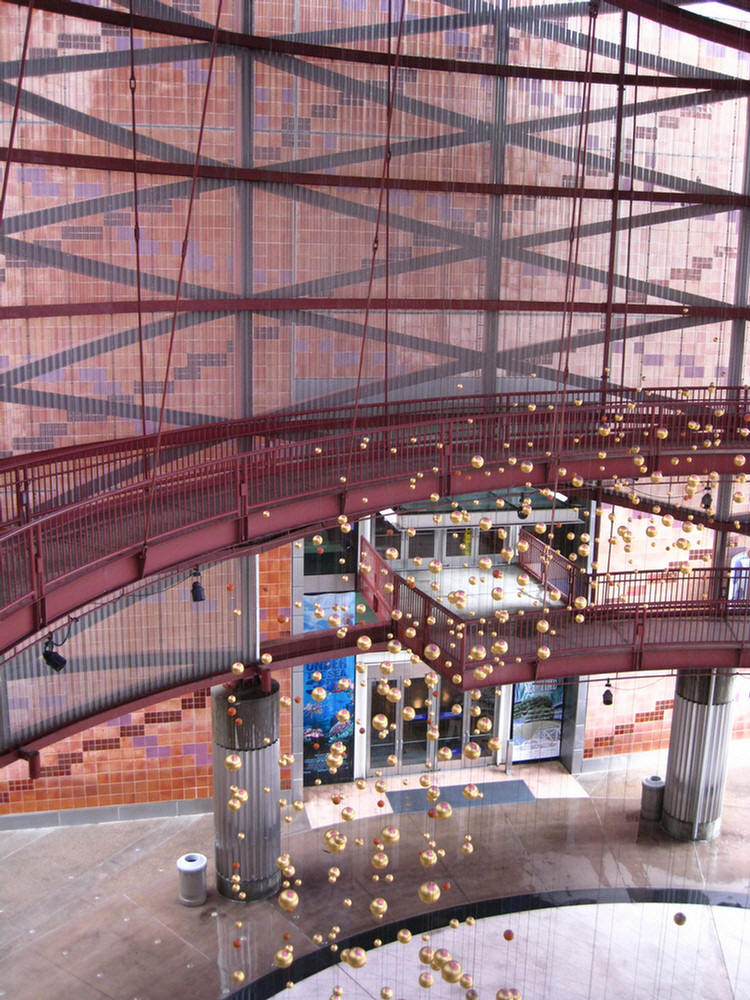
Did you know? - IMAX is a motion picture film format and projection standard created by Canada's IMAX Corporation. The traditional version of IMAX has the capacity to record and display images of far greater size and resolution than conventional film systems. A standard IMAX screen is 22 meters (72 ft) wide and 16.1 meters (53 ft) high, but can vary. The world's largest cinema screen and IMAX screen is in the LG IMAX theatre in Darling Harbor, Sydney. It is 35.73 m wide by 29.42 m (approximately 8 stories) high – covering an area of more than 1,015 square meters.
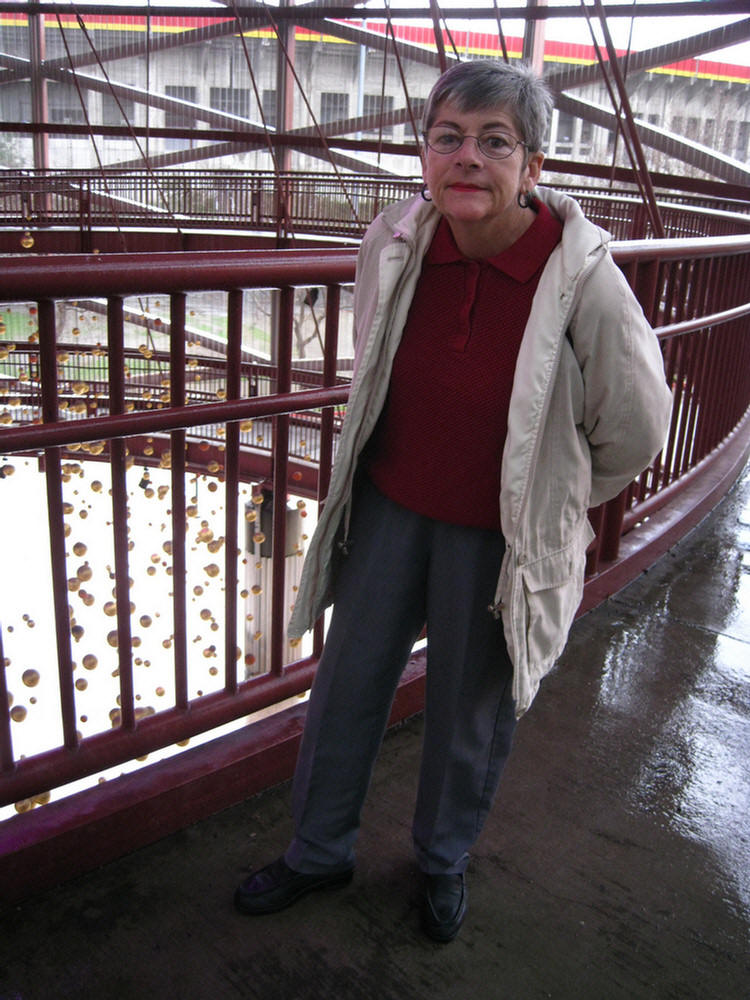
Sue approves since we do not have to get wet!
Quick Visit To Transportation Before We See The Shows
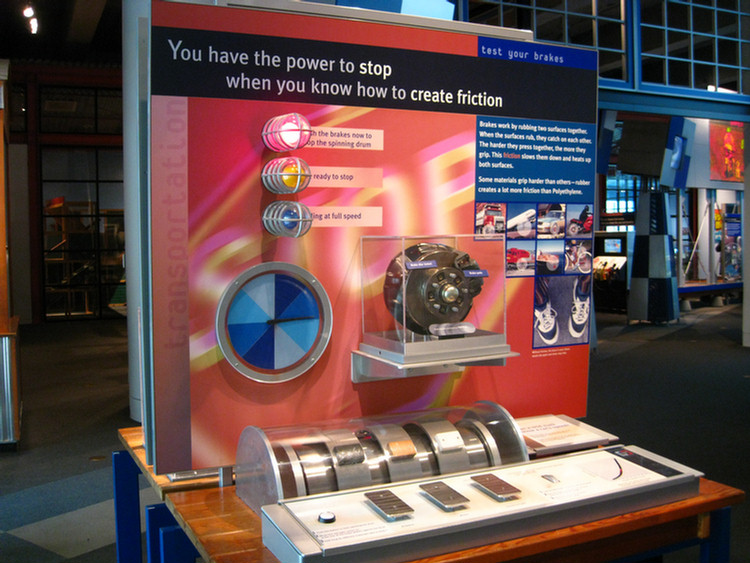
Great display on braking systems
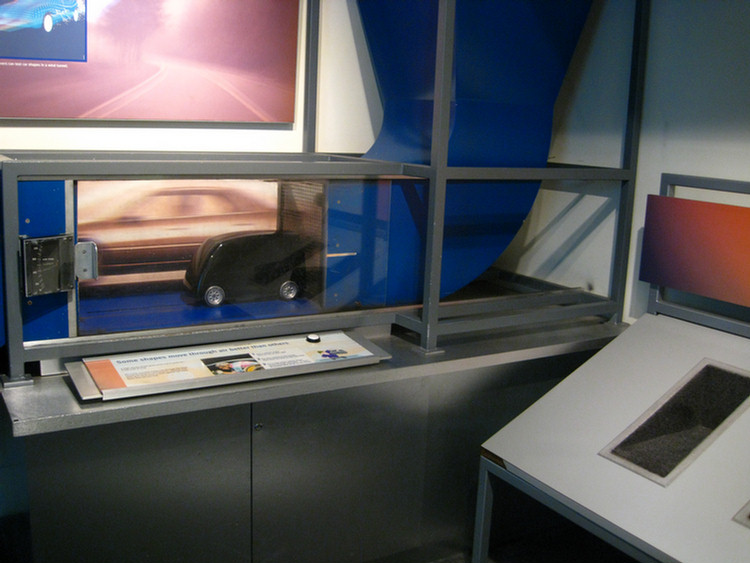
A Do It Yourself Wind Tunnel
No Photos In The IMAX Theater
Did you know? - The desire to increase the visual impact of film has a long history. In 1929, Fox introduced Fox Grandeur, the first 70 mm movie format, but it quickly fell from use. In the 1950s, CinemaScope (introduced in 1953) and VistaVision (1954) widened the image projected from 35 mm film, and there were multi-projector systems such as Cinerama (1952) for even wider presentations. While impressive, Cinerama was difficult to set up, and the seams between adjacent projected images were difficult to hide.
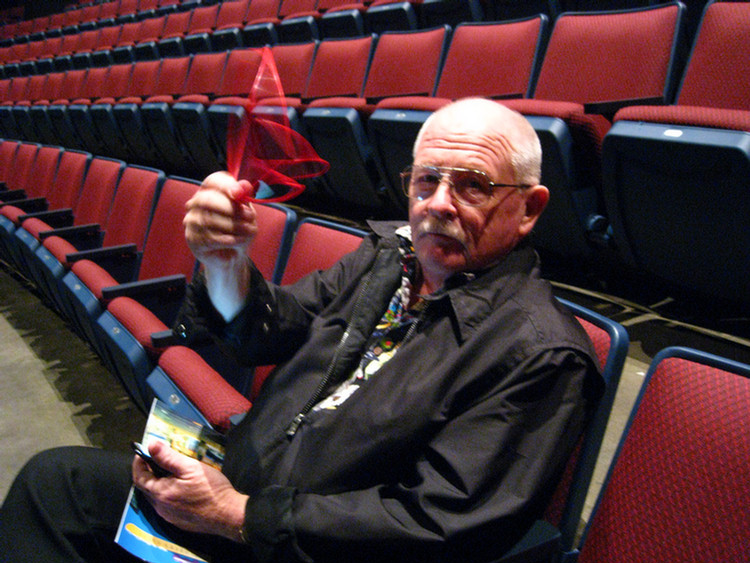
Even the 3-D glasses were big!
We First Saw "Under The Sea"

Under The Sea 3D will transport moviegoers to some of the most exotic and isolated undersea locations on Earth, including Southern Australia, New Guinea and others in the Indo-Pacific region, allowing them to experience face-to-face encounters with some of the most mysterious and stunning creatures of the sea. It will offer a uniquely inspirational and entertaining way to explore the impact that global climate change has had on ocean wilderness.
See IMDB .
The "Across The Sea Of Time"
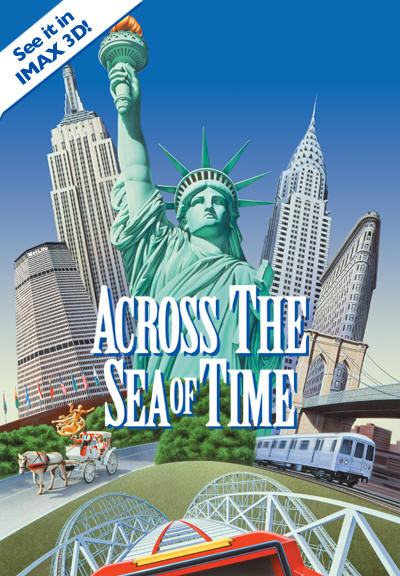
TOMAS is an eleven-year-old Russian stowaway who is bound for America for a very special reason. A hundred years ago, Tomas' ancestor -- LEOPOLD MINTON -- immigrated to America to start a new life. After becoming a 3D photographer, Leopold sent black and white stereocard pictures of New York City, his new home, to his family back in Russia. His wish was for them to join him in America. Now, armed with these old stereocards and Leopold's letters, Tomas comes to New York to find the American branch of his family.
Wall Street, Chinatown, Little Italy, the subway system, the Empire State Building, South Street Seaport, Coney Island, Central Park, Broadway...Tomas sees it all, from a rollercoaster to the high kicking Broadway cast of CRAZY FOR YOU. Always keeping an eye out for the distinctive brownstone, Tomas enjoys his whirlwind tour of New York, a city even more magnificent now than it was when the stereocard photographs were taken.
Click here to view the film's website.
See IMDB
We had a great day at the museum and plan to go back and see the rest. We figure we got to see about half of it on this trip! Gives us a reason to go again!